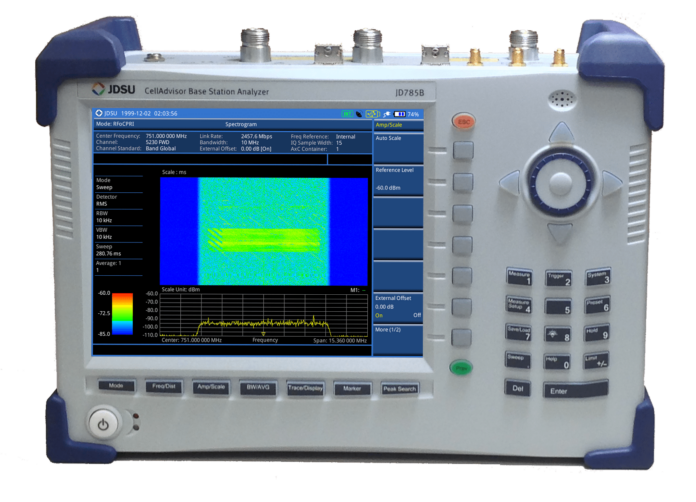JDSU has added the ability to analyze radio frequency characteristics over the Common Public Radio Interface, or CPRI, specification for base stations. The company said it is the first in the industry to introduce integrated CPRI support on a base station analyzer, its CellAdvisor Base Station Analyzer.
The CPRI interface was developed in order to allow RF to be delivered over fiber, which is increasingly in use at next-generation cell sites in fiber-to-the-antenna (FTTA) implementations where the baseband unit is placed at the base of the tower and fiber feeds run to remote radio heads. The CPRI link connects the remote units to the baseband. Current testing methods for that setup require a tower climb, but the instrument with RF over CPRI can be plugged in at the base of the tower, allowing techs “to get all the access to the RF signals and the spectrum over that, without having to climb the tower,” said Paul Gowans, mobility marketing manager for JDSU. According to Gowans, the instrument can be used with distributed antenna systems, small cells, and hybrid sites as well as macro cellular locations.
“It sounds simple, but it’s a big advantage, and we’re the first to market to integrate something like that in a field-based instrument,” Gowans said.
Subscribe now to get the daily newsletter from RCR Wireless News
He said the base station analyzer is typically used during site commissioning and turn-up, as well as in ongoing maintenance and troubleshooting.
“The pace of change in the mobile industry is unprecedented — advancements in cell tower technology are helping to improve service coverage and signal quality,” said Olga Shapiro, who is program manager for measurement and instrumentation at Frost & Sullivan, in a comment on the product. Shapiro said that JDSU’s RF over CPRI feature “presents a truly innovative solution. Technicians will be able to maintain and manage fiber-based cell sites faster, easier and less expensively. What’s also impressive is the feature minimizes dangerous tower climbs which can improve safety, lower maintenance cost and reduces test time.”

